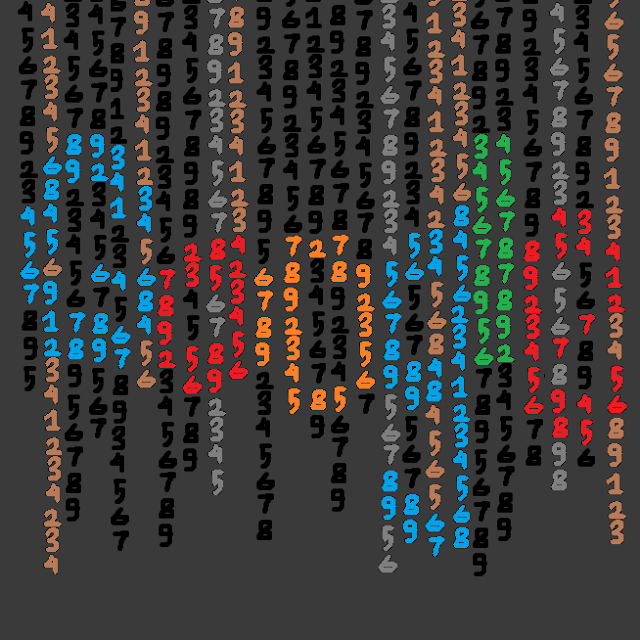The Untold Origins of Latin Urban Music Genre - Blog No. 76
When you hear the hypnotic beat of reggaetón or the swagger of Latin trap, you’re tapping into a rich, rebellious history that spans decades and crosses continents. Latin Urban music isn't just a genre—it’s a cultural movement. Yet, few know its untold origins. Behind every thumping bass and fiery lyric lies a story of resistance, migration, fusion, and identity. Today, we're peeling back the layers of Latin Urban music to reveal its true roots and evolution.
What Is Latin Urban Music?
Before diving into history, let’s get our bearings. Latin Urban music is a broad umbrella that encompasses styles like reggaetón, Latin trap, dembow, Latin hip-hop, and moombahton. It's gritty. It's street. It fuses Afro-Caribbean rhythms with hip-hop attitude, and it’s dominated global charts thanks to artists like Bad Bunny, J Balvin, and Karol G. But the genre’s beginnings? They’re anything but glamorous.
Related
The Sound of the Streets: Puerto Rico and Panama’s Parallel Stories
The story of Latin Urban music has two cradles: Panama and Puerto Rico. In the 1980s and early '90s, while hip-hop and dancehall were blossoming in the U.S. and Jamaica, Latin America was listening—and remixing.
Panama: The Reggae en Español Revolution
In Panama, where a large Afro-Caribbean population descended from Jamaican laborers working on the canal, reggae and dancehall took hold early. DJs began translating Jamaican hits into Spanish—literally. These weren’t covers; they were cultural transplants. Pioneers like El General, often called the "Father of Reggaetón," brought reggae en español to the forefront with hits like "Tu Pun Pun" and "Te Ves Buena."
El General’s music exploded across Latin America in the early '90s. His sound combined Jamaican riddims with Spanish lyrics and a Panamanian accent—a new flavor that hadn’t been heard before.
But Panama’s contribution is often forgotten. Why?
Because at the same time, Puerto Rico was cooking up something more aggressive, raw, and undeniably urban.
Puerto Rico: The Birthplace of Reggaetón
While Panama brought the seed, Puerto Rico watered it and helped it bloom into what we now know as reggaetón.
In the early 1990s, Puerto Rican youth—especially those in housing projects like Villa Kennedy and Llorens Torres—were absorbing the hip-hop culture from the U.S., merging it with the Jamaican dancehall influence coming through Panama, and mixing it with their own plena, bomba, and salsa heritage.
The result? A gritty, underground style called "underground" or "perreo".
This wasn’t the reggaetón you hear today. It was raw, often X-rated, and distributed on cassette tapes in barbershops and street corners. Censorship loomed. In fact, in 1995, the Puerto Rican government raided music stores and confiscated albums like Playero 37—yes, confiscated. This attempt to suppress the movement only made it stronger.
DJs Were the Gatekeepers
Names like DJ Playero, DJ Nelson, The Noise, and DJ Blass were pivotal. They weren’t just playing music; they were producing it, curating it, and distributing it in a pre-Spotify world. Without these underground DJs, there would be no Daddy Yankee, no Don Omar, no Ivy Queen.
From the Shadows to the Spotlight: 2000s Explosion
By the early 2000s, reggaetón began its meteoric rise. Artists polished their sound, radio-friendly beats took over, and major labels started to invest.
The Crossover Moment: “Gasolina” Ignites the World
If one track pushed Latin Urban into the global consciousness, it was Daddy Yankee’s “Gasolina” (2004). Produced by Luny Tunes, it combined infectious reggaetón rhythms with pop structure and party vibes. Suddenly, reggaetón wasn’t just for the barrios—it was in nightclubs, on MTV, and climbing Billboard charts.
Labels couldn’t ignore the dollar signs. Latin Urban music had officially crossed over.
The First Wave of Stars
-
Daddy Yankee – The kingpin, whose album Barrio Fino went multi-platinum.
-
Don Omar – The smooth operator, blending reggaetón with romantic themes.
-
Tego Calderón – The conscious rapper who brought Afro-Caribbean identity to the forefront.
-
Ivy Queen – The “Queen of Reggaetón,” a fierce female voice in a male-dominated genre.
These artists paved the way, but the genre was far from done evolving.
Enter Latin Trap: The New Wave
By the 2010s, a new subgenre was bubbling—Latin trap. Born out of the Southern U.S. trap movement (think T.I., Gucci Mane, and later Future and Migos), it was Latin America's turn to reinterpret it.
This sound was slower, darker, more melodic. It emphasized 808 bass, autotuned vocals, drug references, and street tales.
Puerto Rico Leads Again
And again, Puerto Rico was at the forefront. Artists like Anuel AA, Farruko, Bryant Myers, and Bad Bunny took the trap formula and flipped it. They weren’t just mimicking Atlanta—they were building their own blueprint.
Bad Bunny: The Rule Breaker
If Daddy Yankee was the king of reggaetón, Bad Bunny is the genre's visionary rebel. From his SoundCloud beginnings to global stardom, he’s refused to be boxed in. His music blends reggaetón, trap, rock, punk, even bachata. His fashion, unapologetic gender expression, and social commentary have made him more than an artist—he’s a movement.
The Afro-Caribbean DNA in Latin Urban
One crucial point often overlooked in mainstream media is that Latin Urban music is deeply Black music. The rhythms, the swag, the flows—they’re all rooted in the African diaspora.
From Jamaican dancehall and Trinidadian soca to hip-hop and Afrobeat, the sounds are global, but the spirit is undeniably African. That’s why Latin Urban connects so easily with genres like Afrobeats and Caribbean soca—it’s a sonic reunion.
Artists like Tego Calderón and Sech (from Panama) have proudly claimed this heritage, using their platforms to speak on issues of race and identity within Latin culture.
The Digital Revolution: From Mixtapes to TikTok
Another crucial turning point in Latin Urban’s story is the internet. What once required bootleg cassettes now spreads globally in seconds.
-
YouTube gave us visuals. Think of all the viral music videos: “Soy Peor,” “Criminal,” “Bichota.”
-
SoundCloud gave birth to a generation of Latin trappers.
-
TikTok has turned even obscure reggaetón tracks into international hits.
Today, a Latin Urban artist in Medellín or Miami can drop a single and have fans in Tokyo dancing to it by nightfall.
Women in Latin Urban: Breaking the Boys’ Club
For a long time, the genre was hyper-masculine. But that’s changing.
-
Karol G has become a global pop-reggaetón queen, dominating charts and smashing stereotypes.
-
Natti Natasha, Tokischa, Paloma Mami, and others are adding bold, feminist voices to the scene.
These women aren't just guests in the house of Latin Urban—they're renovating it.
The Future of Latin Urban: Global and Genreless
As we look ahead, Latin Urban music is no longer confined to Latin America. It’s the most streamed genre globally, with collaborations that span the globe—Burna Boy with J Balvin, Rosalía with Travis Scott, Shakira with Bizarrap.
It’s genreless, borderless, and increasingly bilingual. Spanish, English, Spanglish—it doesn’t matter. The sound is universal.
Emerging genres like Neo-Perreo and Latin drill show that evolution is still happening. The youth are remixing everything—again.
Related
Final Thoughts: The Pulse of a Culture
The untold origins of Latin Urban music are more than a tale of beats and rhymes—they’re a mirror of migration, struggle, resistance, and pride. From the barrios of Puerto Rico to the studios of Medellín, from the canal zones of Panama to global festival stages, Latin Urban music is the heartbeat of a generation that refuses to be ignored.
So next time you move to a reggaetón beat or vibe to a Latin trap verse, remember: you’re listening to history in motion. And the story? It’s still being written.



Comments
Post a Comment